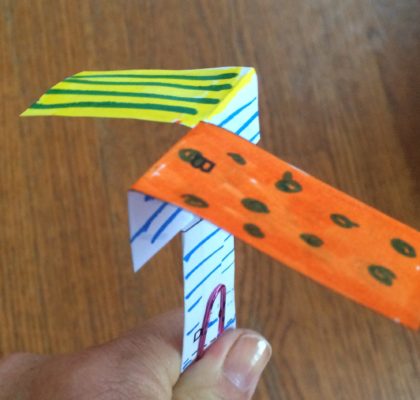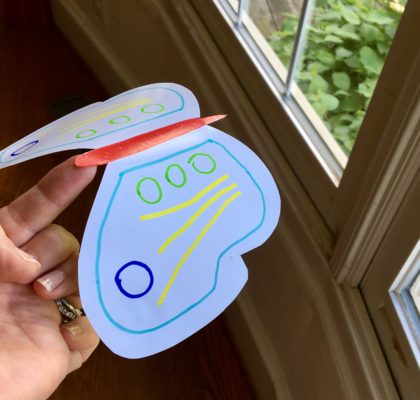
Experiment with Marble Ramps/Inclined Planes
In this science experiment, kids will make marble ramps and explore inclined planes and energy.
An inclined plane is a type of simple machine. Simple machines are tools that make your work easier. They are called simple machines because they either have few or no moving parts. In this experiment, the inclined plane makes work easier by allowing gravity (without any help from you) to move the marble down the ramp.
Potential energy is the energy that is stored in an object. An example of potential energy is a stretched-out rubber band -- the farther you stretch it, the more potential energy it has. Another example is a marble teetering at the top of an inclined plane.
Kinetic energy is the energy of an object in motion. When the rubber band is released and pours out all that energy it had stored up, or when the marble begins to fly down the inclined plane, that energy is kinetic energy. So – potential energy is the energy that is saved up in still objects, and kinetic energy is the energy that pours out of moving objects (energy in motion).
Gravity and potential energy are related. (Remember gravity? It is the force that pulls everything down toward the earth.) Think about the marble sitting at the top of an inclined plane -- when you bump it ever so slightly and it starts to roll, what happens? It starts to roll faster and faster down the ramp, right? (But if you did this same experiment on a flat surface, the marble would barely move, right?) It is gravity that is pulling the ball down the ramp. So that marble teetering at the top of the ramp has the potential energy of gravity -- which is the force that will pull it down the ramp with no effort from you (once you've tipped it onto the ramp).
Safety Notes
Marbles are choking hazards for children under the age of 3, so take precautions to keep marbles from rolling into odd places and getting into the hands and mouths of little ones.
Materials
- 12 - 1 per student
- Medium-sized paper cup - 1 per student
- Marbles - 1 per student
- Duct tape or similar
Instructions
Cut a small square opening into the drinking edge of the paper cup, large enough for a marble to pass through easily. When the cup is turned over, it will look like a cone-shaped house with a door. This will serve as a sort of goal for the marble.
Make a line on the floor using duct tape or similar. Place the cup on the line.
Cut your cardboard tube down to 12” long (if necessary).
Line up your tube with the opening of the cup. Keep the tube at a low angle to start with.
Roll a marble through the tube and into the cup. What happens? (The cup should move.) Measure the distance between where the cup ended up and where the cup started out. How far did it go?
Now move the cup back to the same spot on the line and repeat the experiment, but this time hold the cardboard tube at a slightly higher angle. What happens? How far does the cup move?
Keep experimenting with the tubes at higher and higher angles. What happens? How does the angle affect how fast the marbles roll and how far the cup moves?










